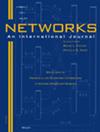社区储能的三个网络设计问题
IF 1.3
4区 计算机科学
Q4 COMPUTER SCIENCE, HARDWARE & ARCHITECTURE
引用次数: 0
摘要
在本文中,我们建立了新颖的数学模型,通过在智慧城市背景下将消费者和消费者聚集到能源共享社区/微电网中,优化社区储能(CES)的利用。使用统一的混合整数线性编程公式对三种不同的微电网配置进行建模。这些配置代表了三种不同的商业模式,即:孤岛模式、互联模式和能源服务公司模式。所提出的数学公式确定了最佳家庭聚合以及 CES 的位置和规模。为了克服在多期决策框架内处理运营决策所带来的计算挑战,我们还提出了一种分解方法,以加快解决大型实例所需的计算时间。我们基于马萨诸塞州剑桥市的实际耗电量、发电量和位置网络数据进行了案例研究。我们的数学模型和基础算法框架可用于智能电网的运营和战略规划研究,以激励社区分布式可再生能源发电,提高能源共享社区的自我消费和自给自足能力。这些模型也适用于智能城市、公用事业公司和能源服务公司的政策制定者,因为所提出的模型可为可再生能源相关项目的投资决策提供支持。本文章由计算机程序翻译,如有差异,请以英文原文为准。
Three network design problems for community energy storage
In this article, we develop novel mathematical models to optimize utilization of community energy storage (CES) by clustering prosumers and consumers into energy sharing communities/microgrids in the context of a smart city. Three different microgrid configurations are modeled using a unifying mixed‐integer linear programming formulation. These configurations represent three different business models, namely: the island model, the interconnected model, and the Energy Service Companies model. The proposed mathematical formulations determine the optimal households' aggregation as well as the location and sizing of CES. To overcome the computational challenges of treating operational decisions within a multi‐period decision making framework, we also propose a decomposition approach to accelerate the computational time needed to solve larger instances. We conduct a case study based on real power consumption, power generation, and location network data from Cambridge, MA. Our mathematical models and the underlying algorithmic framework can be used in operational and strategic planning studies on smart grids to incentivize the communitarian distributed renewable energy generation and to improve the self‐consumption and self‐sufficiency of the energy sharing community. The models are also targeted to policymakers of smart cities, utility companies, and Energy Service Companies as the proposed models support decision making on renewable energy related projects investments.
求助全文
通过发布文献求助,成功后即可免费获取论文全文。
去求助
来源期刊

Networks
工程技术-计算机:硬件
CiteScore
4.40
自引率
9.50%
发文量
46
审稿时长
12 months
期刊介绍:
Network problems are pervasive in our modern technological society, as witnessed by our reliance on physical networks that provide power, communication, and transportation. As well, a number of processes can be modeled using logical networks, as in the scheduling of interdependent tasks, the dating of archaeological artifacts, or the compilation of subroutines comprising a large computer program. Networks provide a common framework for posing and studying problems that often have wider applicability than their originating context.
The goal of this journal is to provide a central forum for the distribution of timely information about network problems, their design and mathematical analysis, as well as efficient algorithms for carrying out optimization on networks. The nonstandard modeling of diverse processes using networks and network concepts is also of interest. Consequently, the disciplines that are useful in studying networks are varied, including applied mathematics, operations research, computer science, discrete mathematics, and economics.
Networks publishes material on the analytic modeling of problems using networks, the mathematical analysis of network problems, the design of computationally efficient network algorithms, and innovative case studies of successful network applications. We do not typically publish works that fall in the realm of pure graph theory (without significant algorithmic and modeling contributions) or papers that deal with engineering aspects of network design. Since the audience for this journal is then necessarily broad, articles that impact multiple application areas or that creatively use new or existing methodologies are especially appropriate. We seek to publish original, well-written research papers that make a substantive contribution to the knowledge base. In addition, tutorial and survey articles are welcomed. All manuscripts are carefully refereed.
 求助内容:
求助内容: 应助结果提醒方式:
应助结果提醒方式:


